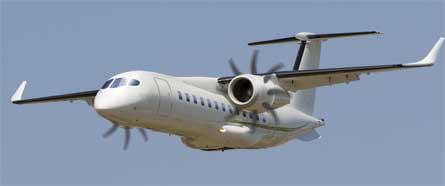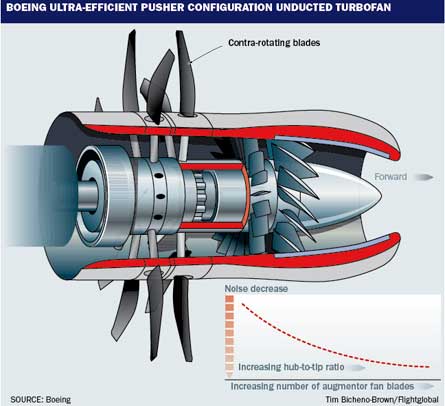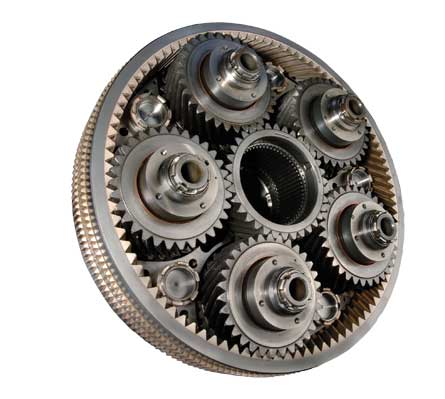Environmental and efficiency mandates will force evolutionary or perhaps revolutionary changes in third-generation turbofan engine architecture in the post-2025 timeframe.
As bypass ratios and fans grow in size to increase propulsive efficiency, the quandary of how to fit engine to airframe becomes critical, as does the task of ensuring long engine life in the presence of higher overall pressure ratios - and hence higher temperatures - to eke out maximum thermal efficiency from an engine core (see table).
The category of next-generation engines (N+1) due around 2015 comprises the Pratt & Whitney geared turbofan and CFM Leap-X, both promising reductions in fuel burn of 15%. Second-generation engines (N+2) in the 2025 timeframe could bring another 10% reduction in fuel burn by increasing pressure ratios further, but also by increasing the bypass ratio, potentially meaning larger fans.
"What do we do after [2025], where you can't go to tube and wing any more?" asks Alan Epstein, P&W vice-president of technology and environment. "Tube and wing will get you through the mid-2020s, accommodating the best engine we know how to build in the 18-20 bypass ratio range. Once you get bigger than that though, it's not going to fit."
While engine makers and airframers have not provided specifics on exactly how they plan to navigate the trade-offs needed to continue boosting propulsive and thermal efficiency for the "N+3" or third-generation timeframe, glimpses of some of the possible solutions or key enablers are emerging through the patent application process.
 |
|---|
© Tim Bicheno-Brown/Flightglobal |
What Boeinbg's augmentor concept might look like |
P&W could propose larger and larger bypass ratios for geared ducted fans for N+3 while CFM International, General Electric (a 50/50 joint venture partner in CFM) and Rolls-Royce have put their research dollars, at least publicly, into open-rotor designs with a high-speed core driving an infinite bypass ratio advanced propeller in a single tractor or dual counter-rotating pusher configuration.
One challenge faced by P&W in bumping up bypass ratios relates to the mechanical shaft (low spool) on which the low pressure compressor and low-pressure turbine are mounted. In its new PW1000G family of engines, P&W uses the fan gear drive system (FDGS) to allow the "low spool" to run at a significantly higher speed than is typical to greatly minimise the number of fan blades required. The low spool connects the low-pressure compressor and low-pressure turbine and is nested within the high spool, which connects the high-pressure compressor and high-pressure turbine. The FDGS reduces the low-spool rate to allow the fan to spin at an optimum speed (about a third of the low-spool speed).
 |
|---|
If designers increase the bypass ratio, the core size correspondingly shrinks, meaning a smaller low-spool shaft size. "The low-pressure shaft, however, cannot be reduced in diameter because the rotational speeds of the low-pressure spool are limited by the critical speed," says P&W in a US patent application published in March. "The shaft critical speed is proportional to the shaft diameter and inversely proportional to the shaft length. Thus, decreasing the shaft diameter with reduced core sizes is not possible without reducing the shaft length if the same critical speed is desired."
Assuming a fixed engine length and low-spool speed, designers would, among other changes, have to increase the size and weight of the high-pressure spool to accommodate the openings for a larger low-pressure shaft size, decreasing the efficiency of the engine.
One proposed solution is to turn the engine around, so to speak. The P&W patent application details an engine architecture whereby the low spool in its entirety is set forward of the high spool, allowing for decoupled shafts by using a reverse duct to channel the compressed air from the low-pressure compressor toward the back of the engine, reversing the flow to the forward direction and into the high-pressure compressor.
 | |
|---|---|
For open-rotor (also known as propfan) proponents, a major challenge is to control cabin and external noise. Both GE and P&W experimented with propfans in the late 1980s, in GE's case with the GE36 engine, which was shown to cut fuel burn by around 30% compared with turbofans. The GE36 featured a turbojet core driving dual counter-rotating eight-blade propfans in a pusher configuration. The engine was tested on a Boeing 727 (one engine) and a Boeing MD-90 (both engines).
At CFM and GE, high-speed windtunnel work with NASA on new quieter blade designs is expected to be complete in 2012. This effort aims at making the architecture acceptable from a noise standpoint in the cabin and at airports.
INTEGRATED PROPULSION
GE is also studying alternative "highly integrated" propulsion methods such as hybrid turbo-electrics and is invested in thermal efficiency improvements including ceramic matrix composites and advanced metallics to allow engines to run hotter. The company expects that by the 2035 timeframe (N+3) half of the engine could be non-metallic.
A concept proposed by a group of Boeing employees in March melds the best features of both the P&W and GE advanced work to yield a "step change" in engine design. The patent application was authored in part by Boeing's guru for future concepts and product evaluation, Mithra Sankrithi. While patents are often the paper equivalents of pipedreams, the ultra-efficient propulsor would appear to solve some of the key problems faced by N+3 engine designers, combining quiet operation of a high-bypass turbofan with the propulsive efficiency of a propfan, but doing so in a way that optimises fuel efficiency and quiet operation where needed.
 |
|---|
© Pratt & Whitney |
The PW1000G's fan drive gear system |
The patent reveals a geared engine for which airflow from the core, ducted turbofan and external "augmentor fan" - with blades mounted on a ring that circle the ducted fan - can be combined by an onboard computer to optimise the required noise and performance/environmental constraints throughout a mission. "The ability to independently, dynamically and automatically vary the power transferred to the airflow between the three mass flows provides an engine with variable cycle capability," says Boeing.
By placing the augmentor blades on a hub that is as large as the circumference of the engine, more blades can be used (16 or more) than for a propfan, making for higher efficiency, and the blades themselves can have a higher sweep than possible for propfans in terms of the mechanical strength needed at the hub, allowing for speeds above Mach 0.8 before transonic effects come in.
Having more blades also reduces the loading per blade, which reduces the noise output, says Boeing. Operationally, the company says thrust from the three engine components could be varied to obtain the desired performance parameters, with the core generating between 10% and 20% of thrust, the ducted fan between 10% and 50%, and the augmentor varying between 30% and 80% of thrust depending on blade angle.
Boeing notes that the augmentor design can also decrease take-off distance by melding the best features of the propfan (quick acceleration at starting speeds) and the turbofan (higher power near the take-off point).
Consult our commercial engines special
Source: Flight International























